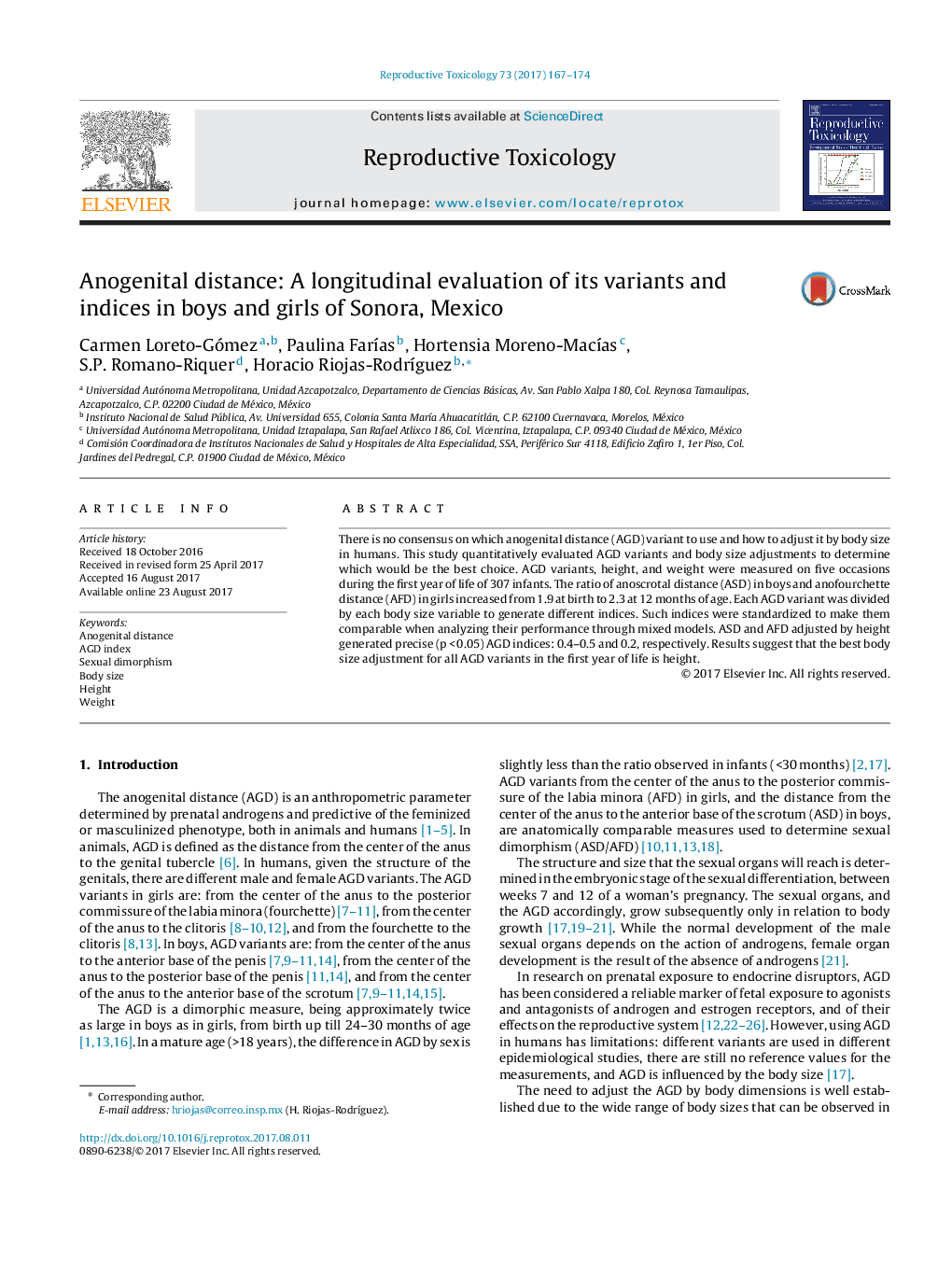| Article ID | Journal | Published Year | Pages | File Type |
|---|---|---|---|---|
| 5561568 | Reproductive Toxicology | 2017 | 8 Pages |
â¢A 2 male/1 female anogenital distance ratio was confirmed in â¤12 months old infants.â¢Anogenital distance/height generated the most precise and consistent indices.â¢Anoscrotal and anofourchette/height indices were 0.4-0.6 and 0.2, respectively.â¢Epidemiological studies should adjust anogenital distance by height in both sexes.
There is no consensus on which anogenital distance (AGD) variant to use and how to adjust it by body size in humans. This study quantitatively evaluated AGD variants and body size adjustments to determine which would be the best choice. AGD variants, height, and weight were measured on five occasions during the first year of life of 307 infants. The ratio of anoscrotal distance (ASD) in boys and anofourchette distance (AFD) in girls increased from 1.9 at birth to 2.3 at 12 months of age. Each AGD variant was divided by each body size variable to generate different indices. Such indices were standardized to make them comparable when analyzing their performance through mixed models. ASD and AFD adjusted by height generated precise (p < 0.05) AGD indices: 0.4-0.5 and 0.2, respectively. Results suggest that the best body size adjustment for all AGD variants in the first year of life is height.
